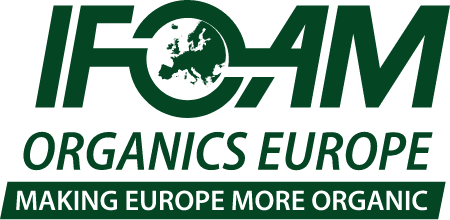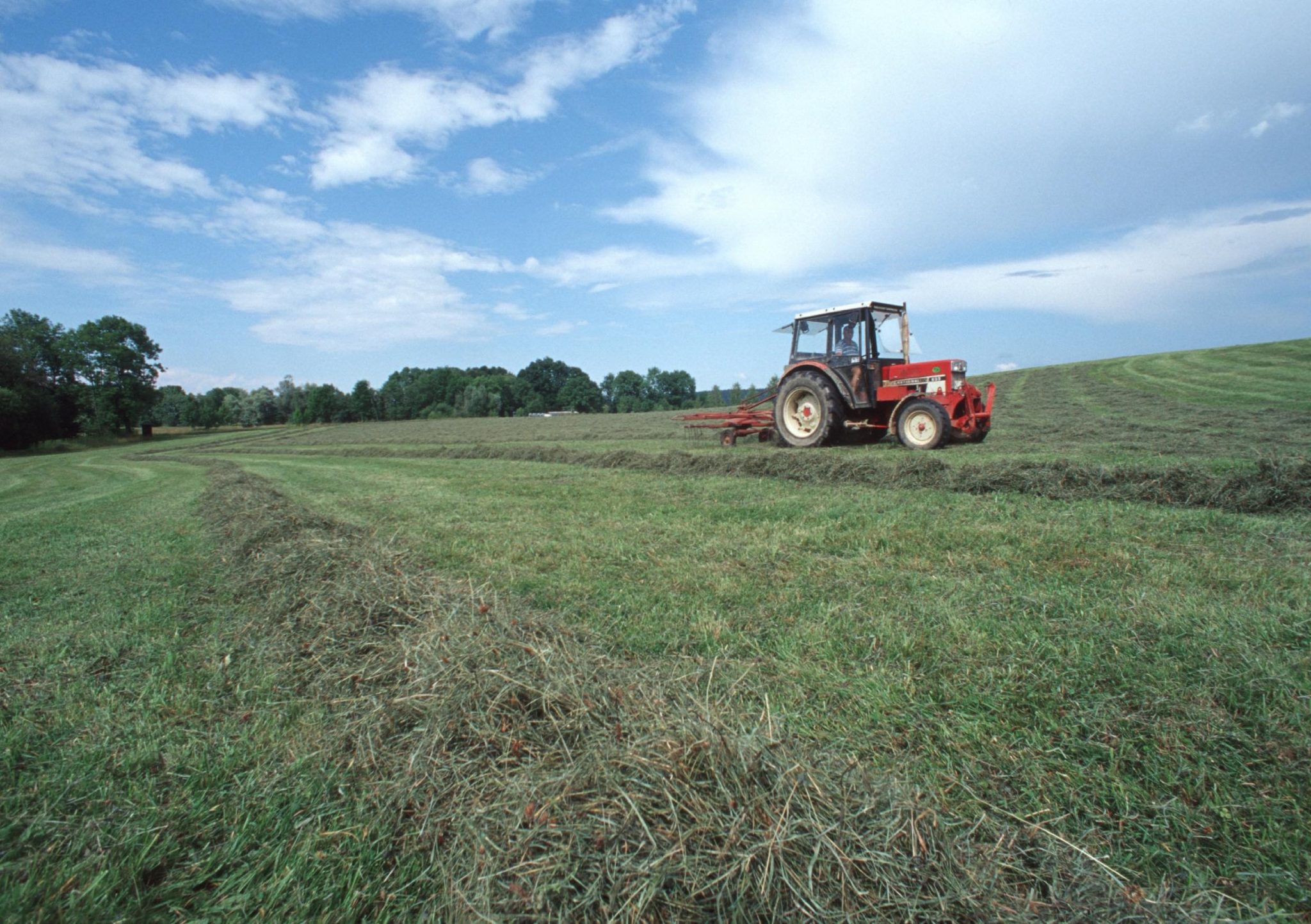
CAP and rural development
Supporting Europe's farmers and developing rural communities
The CAP has played an important role in the development of organic farming in Europe. Support for maintenance and conversion to organic farming is available in almost all EU countries since the 1990’s. To incentivise and help farmers transition to more sustainable practices, the CAP must be ambitious and deliver on the EU environmental objectives.

Since 1962, the Common Agricultural Policy (CAP) has played a crucial role in developing European farming. To date, 31% of the EU budget still goes to the CAP. EU and national policymakers’ decisions about which farming systems and practices to promote through the CAP directly shape the kind of food system we have in the EU.
If we want to transform European food and farming, it is necessary to address the issue of fair prices for farmers, through the CAP (especially the CMO Regulation) but also in relation to other regulatory initiatives (such as the Unfair Trading Practices) and other non-regulatory initiatives (like the Expert Group on the Observatory of the Agri-Food Chain of the European Commission). In addition to reforming the CAP, key drivers for change in rural areas will be better funding for public services, generalising uptake of digital technologies, ensuring generational renewal and promoting bio-districts.
The CAP needs to be adequately funded to support farmers and help them transition to more sustainable practices.
IFOAM Organics Europe…
- Advocates for a fairer, more sustainable and better governed common agriculture and food policy that should incentivise and help farmers to contribute to the EU Green Deal as well as the Biodiversity and Farm to Fork strategies’ objectives.
- Proposes to put the principle of ‘public for money for public goods’ at the heart of the CAP. Instead of receiving untargeted support, farmers should be rewarded on the basis of their contribution to public goods, in particular the preservation of environmental services.
- Works with EU institutions to ensure that the contribution of organic farming’s to the CAP’s objectives is fully recognised, and that Member States provide adequate support for organic conversion and maintenance at the national – through rural development measures or ’Eco-schemes’, or a combination of both;
- Collects messages, arguments, and visuals on the Common Agricultural Policy for its members (contact [email protected] for questions about membership).
The Common Agricultural Policy (CAP) entered into force on the first of January 2023 (until 2027), and consists of two ‘pillars’. The first pillar covers direct payments to farmers, often based on the size of a farm (direct payments per hectare), market measures and the so-called ‘Eco-schemes’. The second pillar covers rural development policy and includes support for agri-environmental and climate measures (AECMs), including organic farming. While the first pillar consists of 100% EU money, rural development policy is co-funded by national (and sometimes regional) budgets.
Support for organic farming remains relatively limited compared to the overall CAP budget. Investments in organic farming (conversion and maintenance) account for around 1.5% of current EU agricultural spending, and is forecast to account for 5% for the 2023-2027 period. Despite improvements over the past decades, sustainability is still not at the core of the CAP’s architecture, making the policy ill-equipped to address the challenges facing the agri-food sector.
Organic farming holds great potential for farmers and consumers alike. The European Commission acknowledged this by setting a target of 25% organic land in the EU by 2030 in their Farm to Fork and Biodiversity strategies. Organic farming indeed delivers public goods in many areas, such as biodiversity, water quality, soil health and air quality (Sanders & Hess, 2019, our study “Organic farming and biodiversity – Policy options”).
Organic farming also creates jobs and attracts young farmers. Policy support for organic farming is crucial to develop both organic production and demand, and balanced push-pull policies can increase the provision of public goods. To enable this, IFOAM Organics Europe advocates for a CAP which offers organic farmers the possibility to receive support for conversion and/or maintenance from both the second pillar and/or the first pillar through Eco-schemes.
The CAP is the main policy instrument that could make the objectives of the Organic Action Plan, the Farm to Fork and Biodiversity strategies a reality. However, it needs a significant reform to become truly efficient to contribute to biodiversity protection, pesticides, antibiotics and fertilisers use reduction, and to further increase organic production and consumption.
The CAP needs to be adequately funded to support farmers and help them transition to more sustainable practices.
Legislative processes and framework
The CAP Regulation 2021/2115 and CAP national Strategic Plans entered into force as of 1 January 2023 until 31 December 2027, after years of debate among EU institutions.
Since the Lisbon Treaty’s entry into force, the CAP falls under the ‘ordinary legislative procedure’. In June 2018, the European Commission presented proposals for a post-2020 Common Agricultural Policy. These proposals include a regulation on the CAP strategic plans, a regulation on the single common market organisation and a horizontal regulation on the financing, managing, and monitoring of the CAP. Trilogue negotiations between the European Commission, the European Parliament and the Council took place until the end of June 2021 and changed the original proposal. The European Parliament’s Plenary approved the new CAP Regulations on 23 November 2021. Member States submitted their CAP national Strategic Plans by 31 December 2021. As of December 2022, the European Commission approved them all and their implementation started on 1 January 2023.
Structure of the CAP 2023-2027
The CAP (2023-2027) Strategic Plan Regulation maintains the two-pillar architecture but includes a new direction towards more subsidiarity and a performance-based delivery model. This gives Member States more responsibility and flexibility to design their CAP Strategic Plans at national level.
The new legal framework created:
- New social conditionality enhancing farmers and farm workers’ rights, mandatory as of 2025. This social conditionality is based on current four EU legislative frameworks (Directive 2019/1152 on Transparent and Predictable Working Conditions, Directive 2009/104/EC on Minimum Safety and Health Requirements for use of work equipment by workers, Directive 89/391/EEC on Improvement of Safety and health of workers, Regulation 492/2011 on Freedom of movement for workers within the EU) and the EU foresees several assessments during and at the end of the CAP’s implementation period;
- New ‘Green Architecture’ consisting of:
- New ‘Eco-schemes’ with a ringfenced budget of 25% of the first Pillar after a two-year transition period (2023-2024). They will be mandatory for Member States and voluntary for farmers;
- Nine Good Agricultural and Environmental Land Conditions (GAECs) in the first Pillar; and
- Agri-Environmental and Climate Measures (AECMs) accounting for 35% budget of the second Pillar.
Prospects & developments
On 29 June 2021, at its General Assembly, IFOAM Organics Europe presented the new study ‘Prospects & developments for organic in national CAP Strategic Plans‘. The study visualises the efforts every country needs to put into place to reach their potential national targets, which should fairly contribute to the EU average 25% target.
In 2019, Europe had an organic land area of 9%, with average payments rates of €213.15/hectare. Only 64% of the certified organic area is currently receiving organic support payments, amounting to almost €2 million of CAP support/year (Note: Average payment rate, percentage of certified area supported, and total spend are 2018 data).
Achieving 25% organic land in the EU by 2030 would require the EU to:
- Triple its organic land area between 2019 and 2030;
- Increase its overall CAP expenditure 3-5-fold by 2030;
- Dedicate 9-15% of the CAP budget to organic (instead of 3% as in 2018 and the 5% forecasted).
Achieving 25% organic land in the EU by 2030 would require Member States to:
- Increase payment rates per hectare before 2030 – to consider increases in costs since payments rates were last set in 2014;
- Some individual countries with low levels of support for organic farming would need to consider a 5-10-fold increase in expenditure to deliver realistic targets for their national organic land area.
According to IFOAM Organics Europe, Member States should introduce a national target for organic land in their CAP Strategic Plan, based on an analysis of the organic sector’s production needs, and of its contribution to the CAP, EU Green Deal, Farm to Fork and Biodiversity strategies’ objectives. The Commission should ensure that all CAP Strategic Plans include a target for organic land representing a fair contribution to the EU’s 25% target. Countries have different baselines and should have different targets, and Member States with already more than 25% organic land should also continue to develop organic farming. This is in line with the EU Organic Action Plan’s call for all Member States to set a target and national strategic plan for developing their organic sectors.
To find out by how much the EU and every Member State should increase their payment rates to achieve 25% organic land in the EU by 2030, have a look at our EU-27 and country cards:
Austria | Belgium | Bulgaria | Croatia | Cyprus | Czech Republic | Denmark | Estonia | Finland | France | Germany | Greece | Hungary | Ireland | Italy | Latvia | Lithuania | Luxembourg | Malta | Netherlands | Poland | Portugal | Romania | Slovakia | Slovenia | Spain | Sweden
Our assessment and recommendation
April 2024 update
The end of 2023, as well as the beginning of 2024 was marked by farmers’ protests all over the Europe, demanding for fair prices, public actions against unfair competition and support for the transition. IFOAM Organics Europe stood in solidarity with farmers. Read our press release for more information.
As an answer to these protests, on 15 March the Commission unveiled its proposal to review the Common Agricultural Policy (CAP). While the organic movement believes that measures to support farmers and answer the concerns expressed during last months’ protests are necessary, the Commission’s proposal fails to address the actual issues the agricultural sector and farmers are facing. Indeed, the core of the proposal is scrapping several ‘good agricultural and environmental conditions’ or GAECs.
Even though we believe that the current CAP’s conditionality was poorly designed and not adapted to the principles (and practice) of organic farming, simply removing them lowers the CAP’s environmental ambitions even further. It is especially discouraging for farmers who want to transform their farm and farming practices to more sustainable systems because this CAP proposal:
- Does not provide comparative advantage to more ambitious farmers, like organic farmers, who wish to invest in sustainable methods of production;
- Lacks general support for all sustainable production methods.
Moreover, the Commission did not provide enough guarantees on the main reason why farmers have been taking to the streets: fair prices and a stronger role in the food supply chain. This is why the organic movement rejected this new CAP proposal. Read more on our press release.
The proposal was accepted by the European Parliament through an urgent procedure during the last plenary session of its term, followed by an acceptance by the Council two weeks later. This means that the dispositions of this CAP reform, which equals to a real CAP reform by its implications, are applicable for farmers for claims of 2024.
March 2022 update
Member States had to submit their Common Agricultural Policy (CAP) national Strategic Plans (SP) by 1 January 2022 to the European Commission (EC). With this evaluation of the support for organic farming in the different draft CAP national Strategic Plans, IFOAM Organics Europe calls on the European Commission, which is evaluating the plans, to ensure that Member States have better measures and budgets that could guarantee at least the continued growth of organic production during the next CAP period, in line with the EU Action Plan on developing organic farming.
Overall, IFOAM Organics Europe is very concerned about the insufficient ambition and budgets to incentivise more farmers to convert to organic farming, and to reward organic farmers for the public goods they provide. More specifically, in comparison to the previous CAP period (2014-2022), our members are concerned with the decrease of a comparative advantage for conversion of conventional farms to organic farming, compared to incentives to adopt other types of farming practices that are less transformative and provide much less environmental benefits. This alarming situation is mainly due to the lack of environmental ambition of the eco-schemes criteria as well as to issues for organic farmers to combine organic schemes with eco-schemes or agri-environmental and climate measures (AECMs).
Read our briefing.
November 2021 update
On 18 November 2021, ahead of the vote on CAP Regulations, IFOAM Organics Europe published an evaluation of measures and budget planned to support organic agriculture in the Member States’ draft CAP Strategic Plans. Unfortunately, the analysis based on organic farmers’ associations shows that unless the draft CAP Strategic Plans are significantly improved in several Member States, the new CAP will fail to contribute to a significant development of organic farming in the EU. Read our briefing.
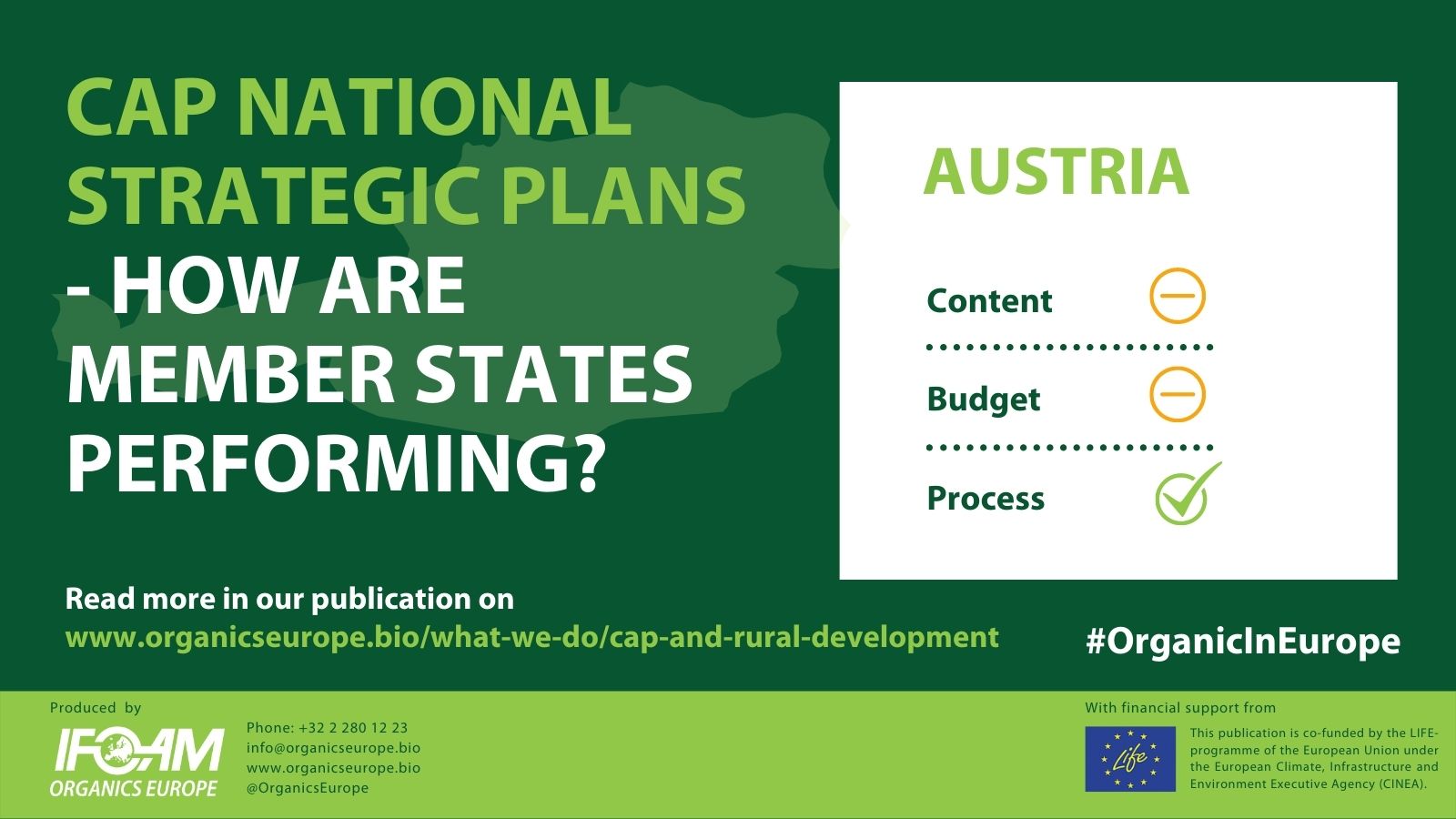

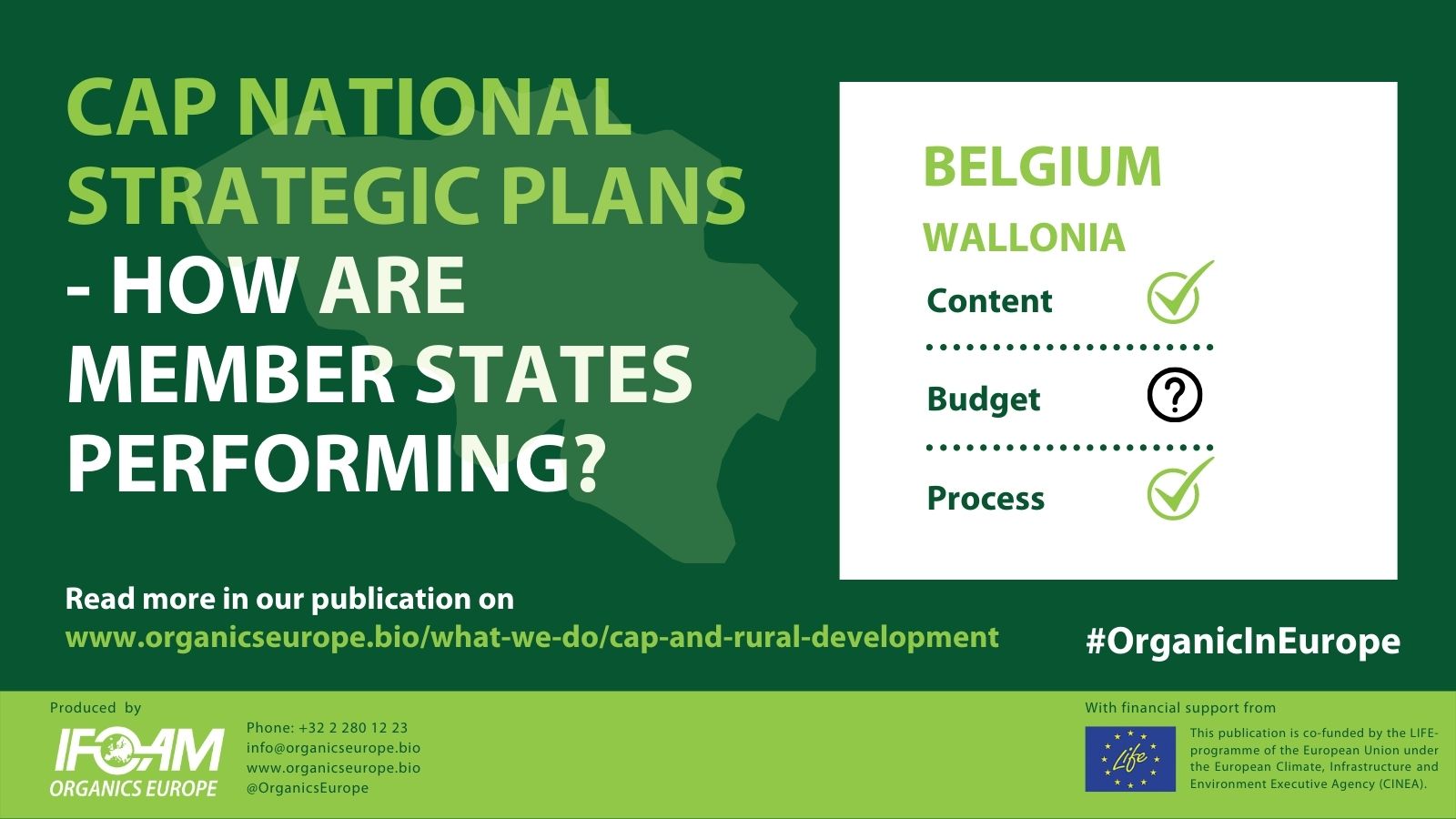
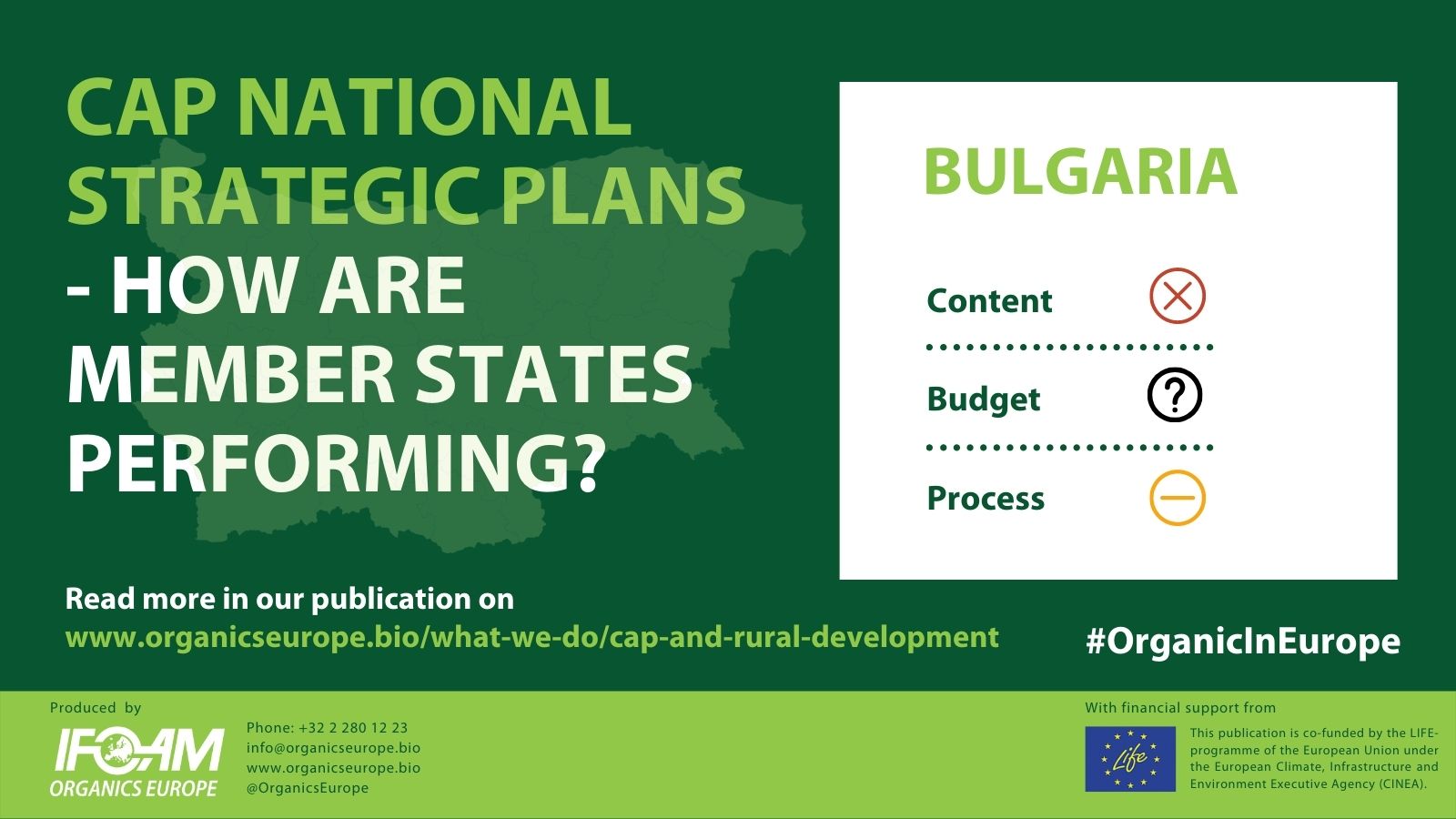


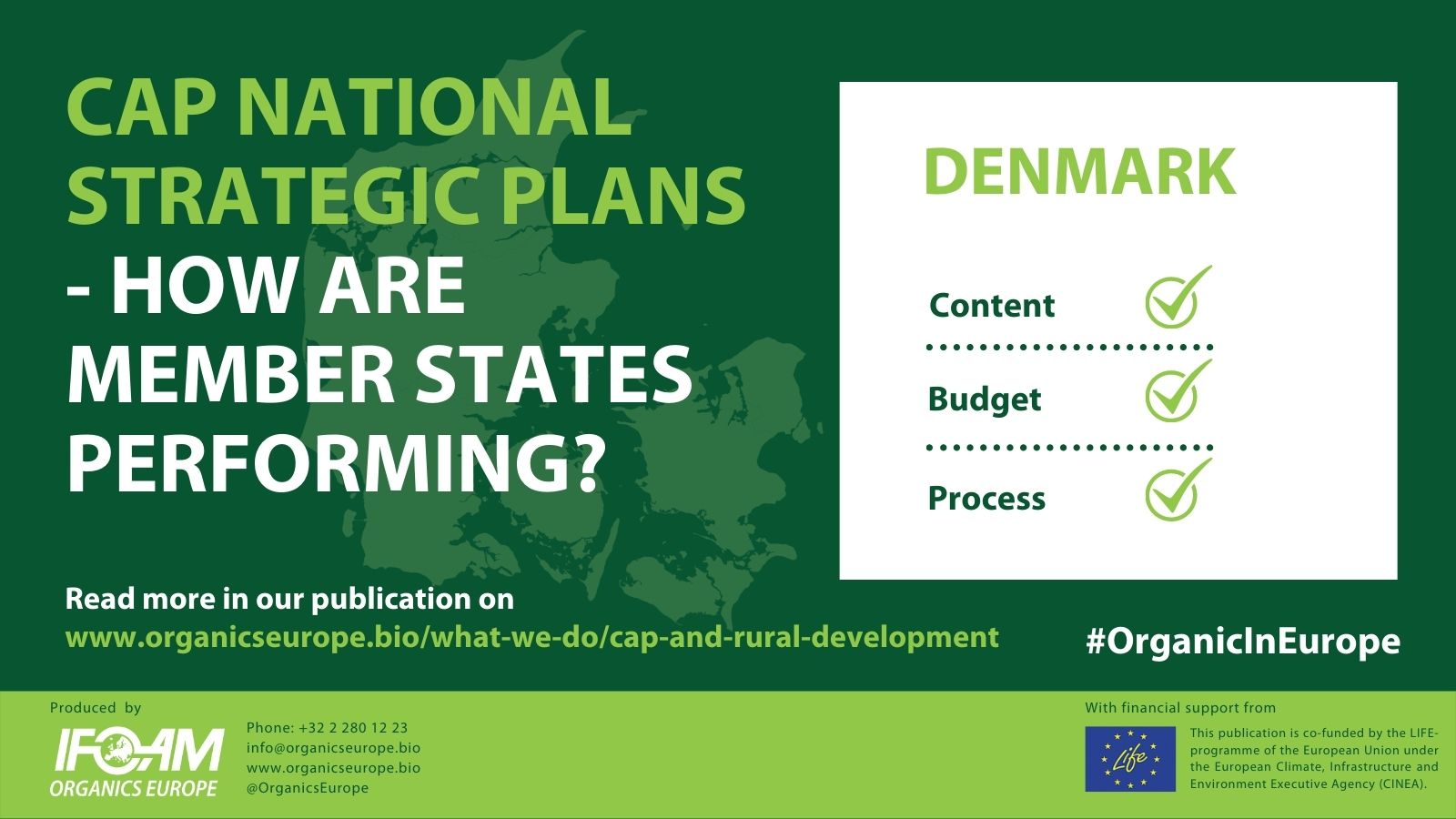

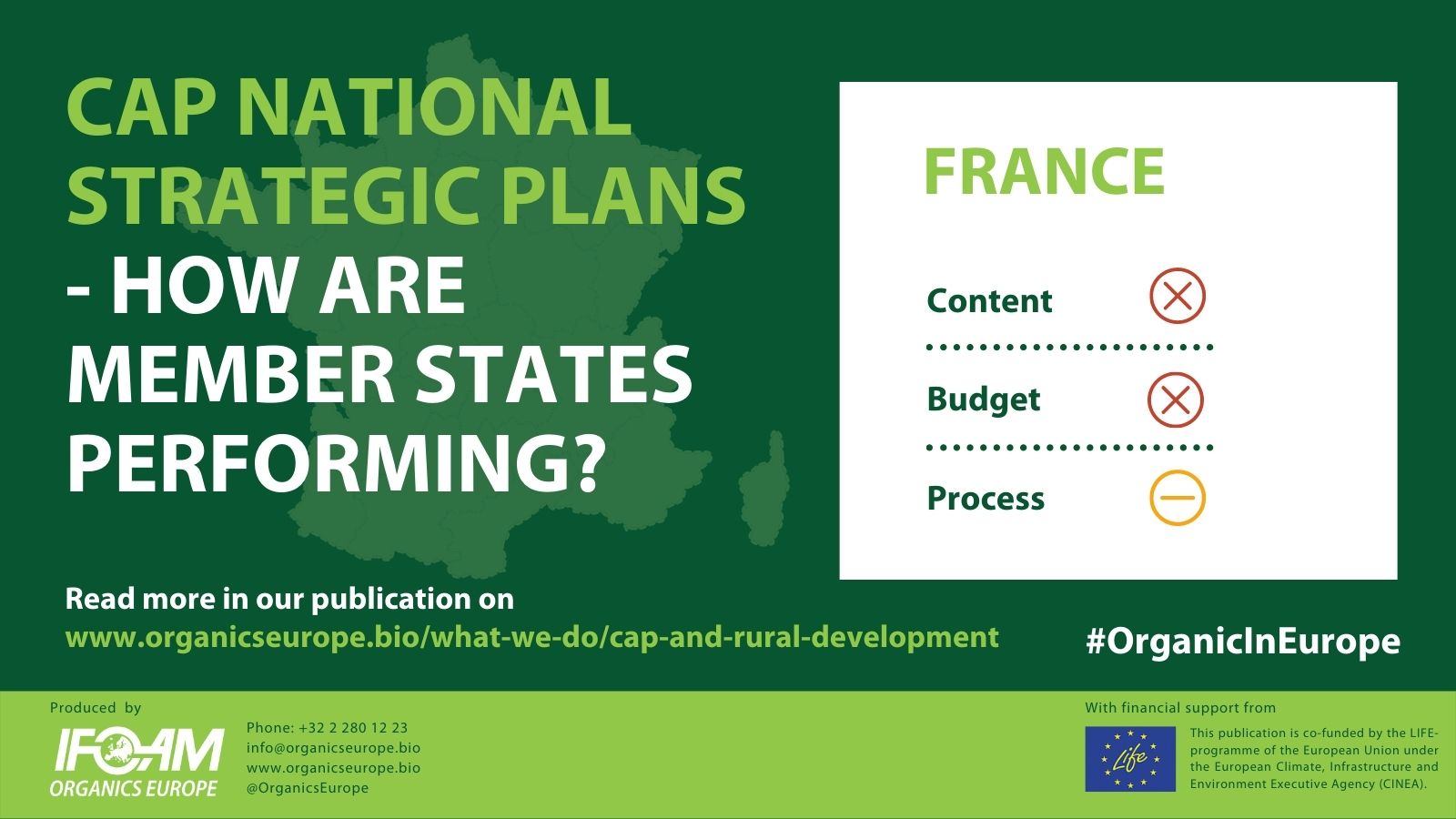


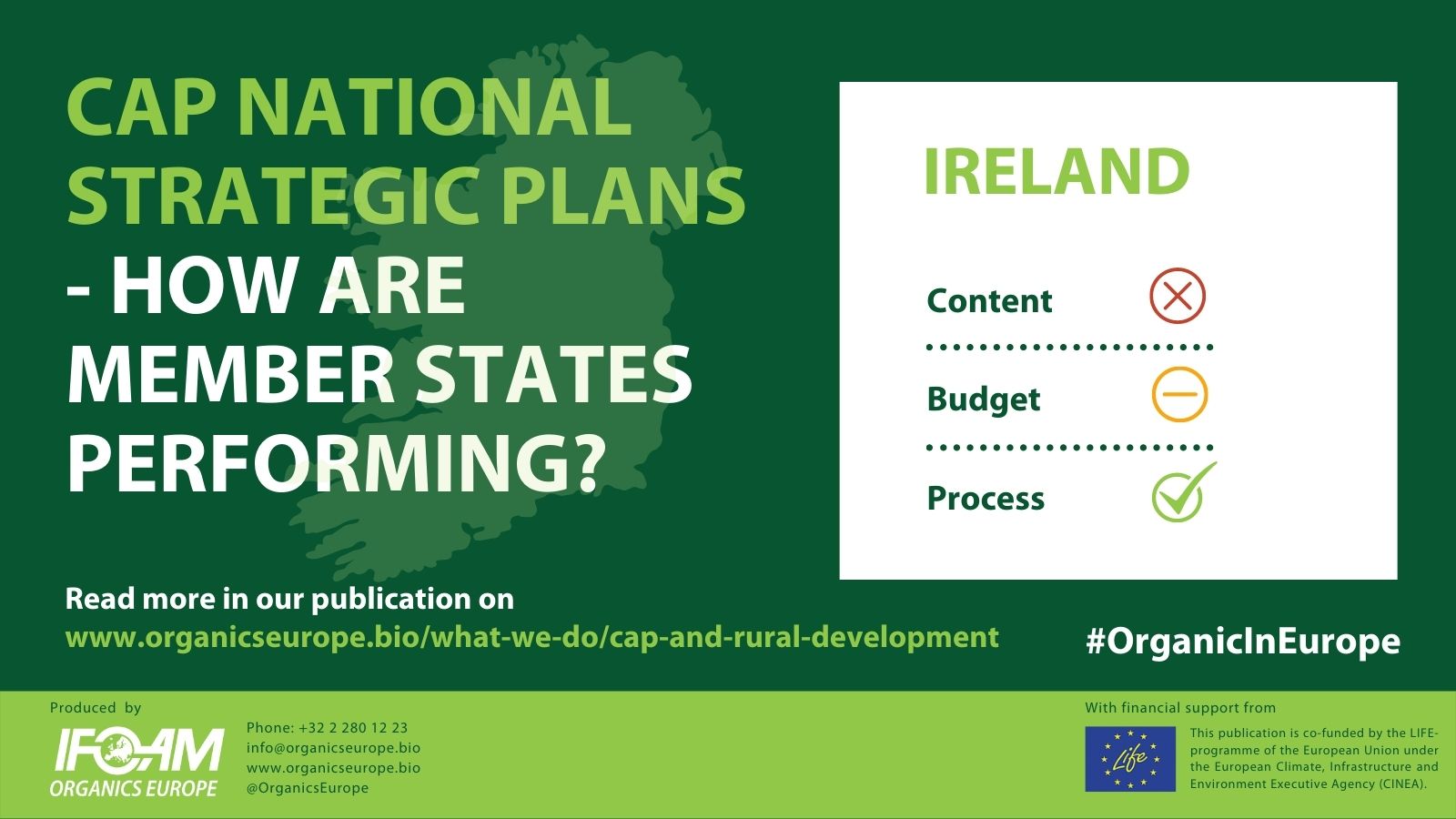







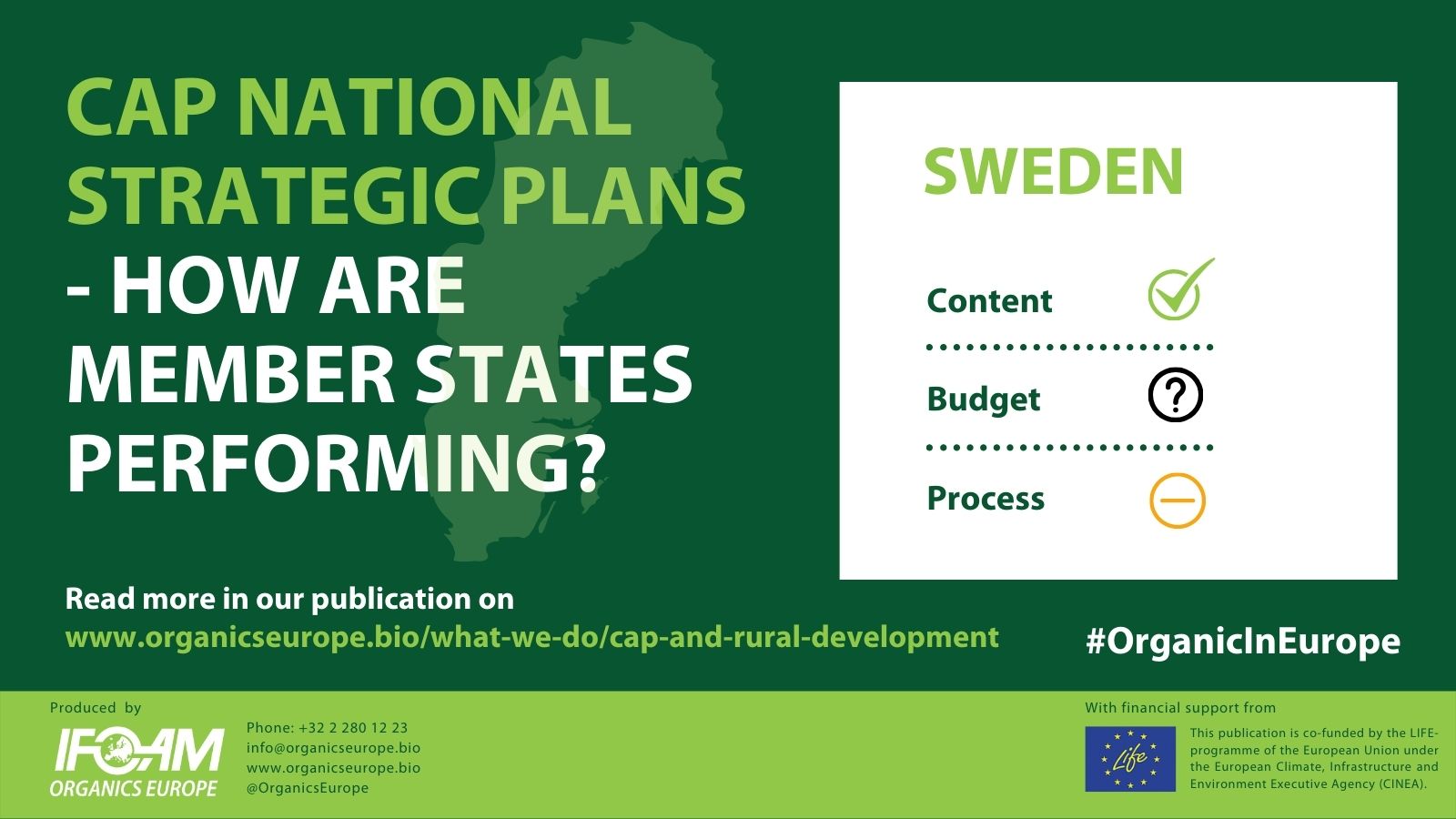
IFOAM Organics Europe developed in 2015 a long-term vision for the CAP post-2020 and a position paper on the Commission’s proposal for a CAP post-2020.
Our recommendations for the CAP:
- Member States should, ideally, include payments for public goods and environmental services, where farmers, organic or conventional, would receive payments proportional to their contribution to the protection of natural resources. But since this is unlikely to happen, Member States should provide an adequate level of support for maintenance and conversion to organic farming, at least at the same level as in the 2014-2020 period (“no backsliding” principle) but preferably at a higher level to boost organic production. Support for organic conversion and maintenance could be funded via rural development measures (Article 65), via Eco-schemes (Article 28) or through a combination of both.
- Eco-schemes should be designed to be compatible and complementary with agri-environmental and climate measures (AECMs), including organic farming measures, set in the second Pillar. Payment rates for eco-schemes should go beyond the “lost revenue / income foregone” calculation method to reward public goods through incentives, and this possibility should be extended to second Pillar measures. For more information on how to use eco-schemes, please read our guide2 for managing authorities.
- Member States should set payments rates proportionate to the ambition and benefits of the farming systems and standards they support and should ensure these payments rates provide a comparative advantage to organic conversion and maintenance, compared to less ambitious standards or single practices that deliver less environmental benefits.
- In line with the EU Action Plan on the development of organic farming (in particular Action 9), the Commission should ensure that all CAP Strategic Plans include a target for organic land that represents a fair contribution to the EU’s overall 25% target, and that the addition of the Strategic Plans would enable to reach this overall target. Member States that still have not introduced a national target for organic farmland in their CAP Strategic Plan should do so.
- Budgets for support measures for organic farming for the period 2023-2027 should be realistic and high enough to allow the country to reach its national target (based on the expected rate of conversion to reach the target) and to comparatively high enough payment rates to convince conventional farmers to engage in the whole farm re-design that conversion to organic management entails. Similarly, conventional farmers are unlikely to transition to organic farming if less ambitious standards and practices benefit from equal or higher payment rates, or if payments stop after the 3 or 5 years of the conversion period.
- Generally, Member States should describe in their CAP Strategic Plans the relevant policy mix to increase both production and demand for organic products, and to ensure independent and well-funded Farm Advisory Services, geared towards agroecology.
- Member States should comply with the EU CAP Strategic Plan Regulation’s Article 94 on procedural requirements and consult representatives of the civil society and agricultural sector. It is crucial to have open, fair, and transparent consultation processes where all external stakeholders are involved, heard, and have access to the information.
- The European Commission should call Member States to consult external stakeholders during the amendments process stated in Article 107 of the EU CAP Strategic Plans Regulation.
Revitalising rural areas
Organic farms are key to developing ‘sustainable rural development’, where economic growth, improving social conditions and conserving natural values are equally important. Organic farming enjoys a dynamic growth in many EU countries, both in terms of demand, market, and production.
Key drivers for change in rural areas will be better funding for public services, generalising uptake of digital technologies, ensuring generation renewal and promoting bio-districts.
Organic farming and short supply chains have gained even more attention since the COVID-19 crisis. This potential could be further developed using instruments like the Common Agricultural Policy (CAP), the new Organic Action Plan (OAP) and Horizon Europe, the EU’s research policy. The Biodiversity and the Farm to Fork strategies put organic farming at the heart of a transition to sustainable food systems, with a target to reach 25% organic land on average at EU level by 2030. This objective is ambitious but achievable, with the right support policies in place to develop both organic production and demand for organic products, and will greatly contribute to revitalising our rural areas.
Read our feedback to the Commission’s public consultation on rural areas.
Public services and digital technologies: essential for dynamic rural areas
Rural areas have a lot to offer, including in a post-COVID-19 world where people might look for a closer proximity to nature, less pollution and locally produced food. These areas generally offer lower costs of living and housing, and a healthier environment. Moreover, the COVID-19 crisis might have a positive impact on rural-urban linkages.
In many European countries, due to homeworking’s generalisation, many people have fled urban congestion to spend the lockdown in rural areas. However, among the main barriers preventing people to settle down in those less-populated zones remain accessibility to health, social, education, transport, cultural and other key public services, as well as generalised access to digital technologies.
Broadband and high-speed internet access are key for information, knowledge-transfer, collaboration and daily lives of farmers and rural communities. Digitalisation can also help to create shorter supply chains, one of the objectives of the Farm to Fork Strategy.
Young farmers and intergenerational solidarity in rural areas
Throughout the EU, the age pyramid is such that conversions to organic farming will not be enough to meet the objective of 25% organic farmland by 2030. This is mainly because current national policies on starting young farmers or transmission of a farm to a new farmer are not tailored to organic.
As keeping young farmers and/or attracting new players in rural areas is one of the biggest challenges, EU instruments such as the Organic Action Plan and the CAP should better support the transmission of organic farmland and young farmers starting in organic. Member States should establish legal and fiscal frameworks to incentivize the maintenance of organic farmland as organic when an organic farmer retires and transmits their farm to a young farmer. Moreover, Members States’ CAP Strategic Plans should prioritise young farmers willing to start as organic and ensure young farmers get an additional reward if setting-up in organic.
With help of the CAP second pillar, more efforts should be put into increasing intergenerational solidarity. Collective actions in rural areas should be further promoted through CAP instruments such as LEADER, cooperation measures and investments. Advisory services are critical to organic farming and rural development and should ensure equal rights and opportunities for all farmers and beneficiaries, including promoting equality between genders. Specific advisory units specializing on organic farming should encourage new farmers willing to start their organic farms. As underlined by the European Parliament in the Strategic Plans Regulation, Member States should allocate at least 30% of Farm Advisory Services’ (FAS) budget to climate and environmental objectives.
Creating synergies and revitalising rural areas: the success story of bio-districts
Bio-districts are a new rural development model based on preserving agricultural landscapes and biodiversity, cultural heritage and gastronomy, related to organic agriculture and food production. Creating bio-districts should be supported by policy instruments in all Member States.
What are bio-districts?
Bio-districts stem from a collaboration between farmers, citizens/consumers, local public administrations, as well as fair trade groups, national and regional parks, protected natural areas, commercial, touristic, and cultural enterprises, and social cultural and environmental associations who act according to the principles and methods of organic production and consumption. This tightly knit network is a force to be reckoned with when it comes to transforming the territory.
The first bio-district was launched in Italy in 2009 by the Associazione Italiana per l’Agricoltura Biologica (AIAD, the Italian Association for Organic Agriculture) in an area inside the National Park of the Cilento, Vallo di Diano and Alburni. After 3 years, the Cilento bio-district now includes 30 municipalities, 400 enterprises, 20 restaurants and 10 tourist establishments using local organic produce.
30 bio-districts are now operating in Italy alone. Other countries have also implemented bio-districts: Portugal, France, Austria, Switzerland, Spain. Countries such as Slovakia, Hungary, Germany, Brazil, Tunisia, Morocco, Senegal, have started the process to set them up.
Bio-districts’ integrated approach
Bio-districts are an innovative instrument approach to sustainable development in which local authorities play an important role. Advantages in terms of sustainability include:
- Environmental: A sustainable approach to managing the territory, local resources, renewable energy, and striving to use the principles of circular economy including reusing waste;
- Economic: Employment young people and women increases, touristic activities in the area increase, and local and sustainable products are available at an affordable price;
- Social: Valorising local traditions, improving the quality of life, employing the local population, smaller population’s decrease in rural areas, and highlighting quality of agri-food production and local livestock.
How can bio-districts help revitalise rural areas?
- By helping face challenges in terms of access to land. For example, by giving a new lease of life to state-owned and uncultivated land, and implementing fairer relations in the supply chain;
- By playing an active role in simplifying organic certification for organic farmers;
- By exchanging different examples of bio-districts and sustainable agriculture at national, European and global level between actors of the bio-districts and among national and European institutions;
- By developing environmentally conscious food production and consumption that benefits both farmers and the community. A bio-district includes forward-looking farmers who adopt ecological and ethical values combined with organic and agroecological practices;
- In local communities, bio-districts support synergies within the supply chain, thus strengthening cooperation between farmers and other actors and supporting local economic development.

The work of IFOAM Organics Europe on this topic is co-financed by the LIFE programme of the European Union, under the Climate, Infrastructure and Environment Executive Agency (CINEA). This page only reflects the views of the authors and its sole responsibility lies with IFOAM Organics Europe. The CINEA is not responsible for any use that may be made of the information provided.

